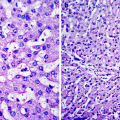and LI Ning2
(1)
Radiology Department, Capital Medical University Beijing You’an Hospital, Beijing, China, People’s Republic
(2)
Capital Medical University Beijing You’an Hospital, Beijing, China, People’s Republic
Abstract
The diagnosis is based on epidemic status, clinical manifestations and etiological tests. Early detection and early diagnosis are the keys to successful prevention and effective treatment.
8.1 Diagnostic Standards
The diagnosis is based on epidemic status, clinical manifestations and etiological tests. Early detection and early diagnosis are the keys to successful prevention and effective treatment.
8.1.1 Suspected Cases
The patients with the following one condition can be diagnosed as suspected cases.
1.
Having flu liked symptoms and having close contact with definitively diagnosed Influenza A (H1N1) patients within 7 days prior to the onset of these symptoms. (Close contact refers to performing diagnostic or therapeutic procedures for patients with Influenza A (H1N1) in their infectious period without effective protection measures, living with Influenza A (H1N1) patients or exposure to the patients’ respiratory secretions and body fluid.)
2.
Having flu liked symptoms and having been to the prevalent areas of Influenza A (H1N1) within 7 days prior to the onset of flu liked symptoms (the areas with constant spread of the virus from person to person, the areas with community prevalence and outbreak of Influenza A (H1N1)).
3.




Having flu liked symptoms and being positive to Influenza A (H1N1) virus test but without further test for the virus subtype.
Stay updated, free articles. Join our Telegram channel

Full access? Get Clinical Tree




